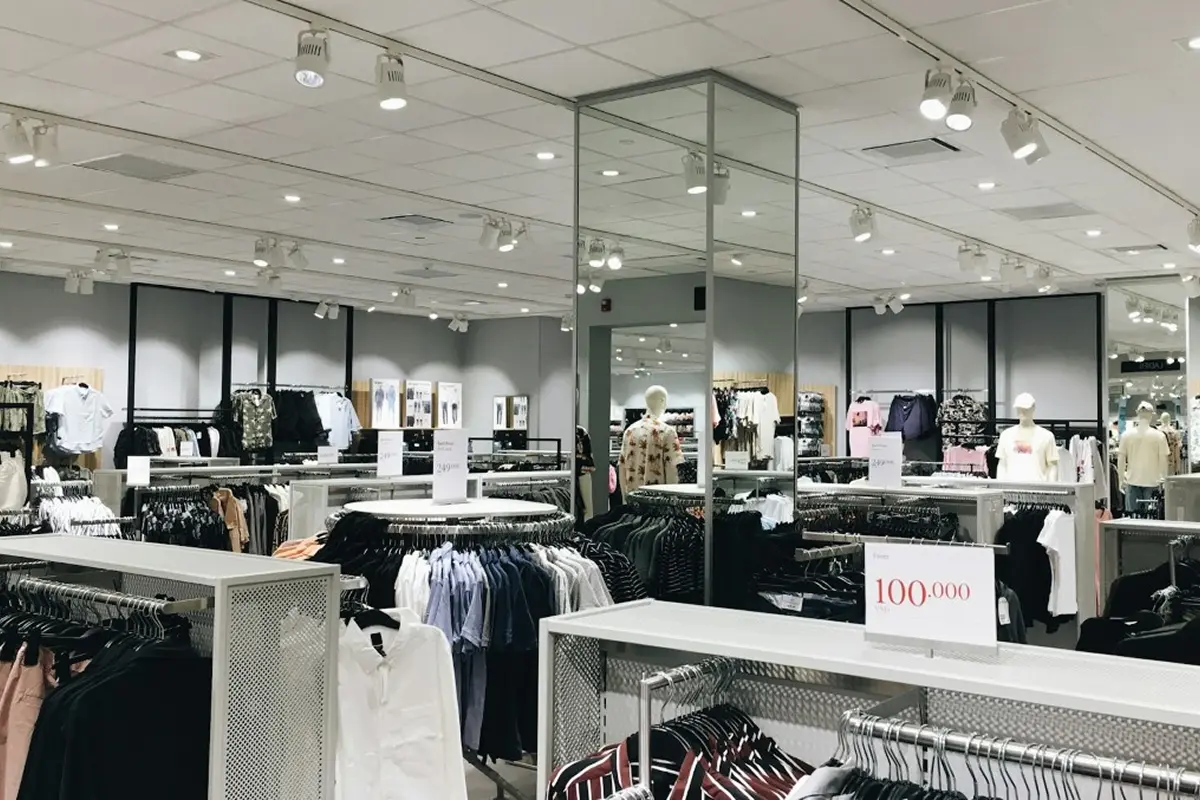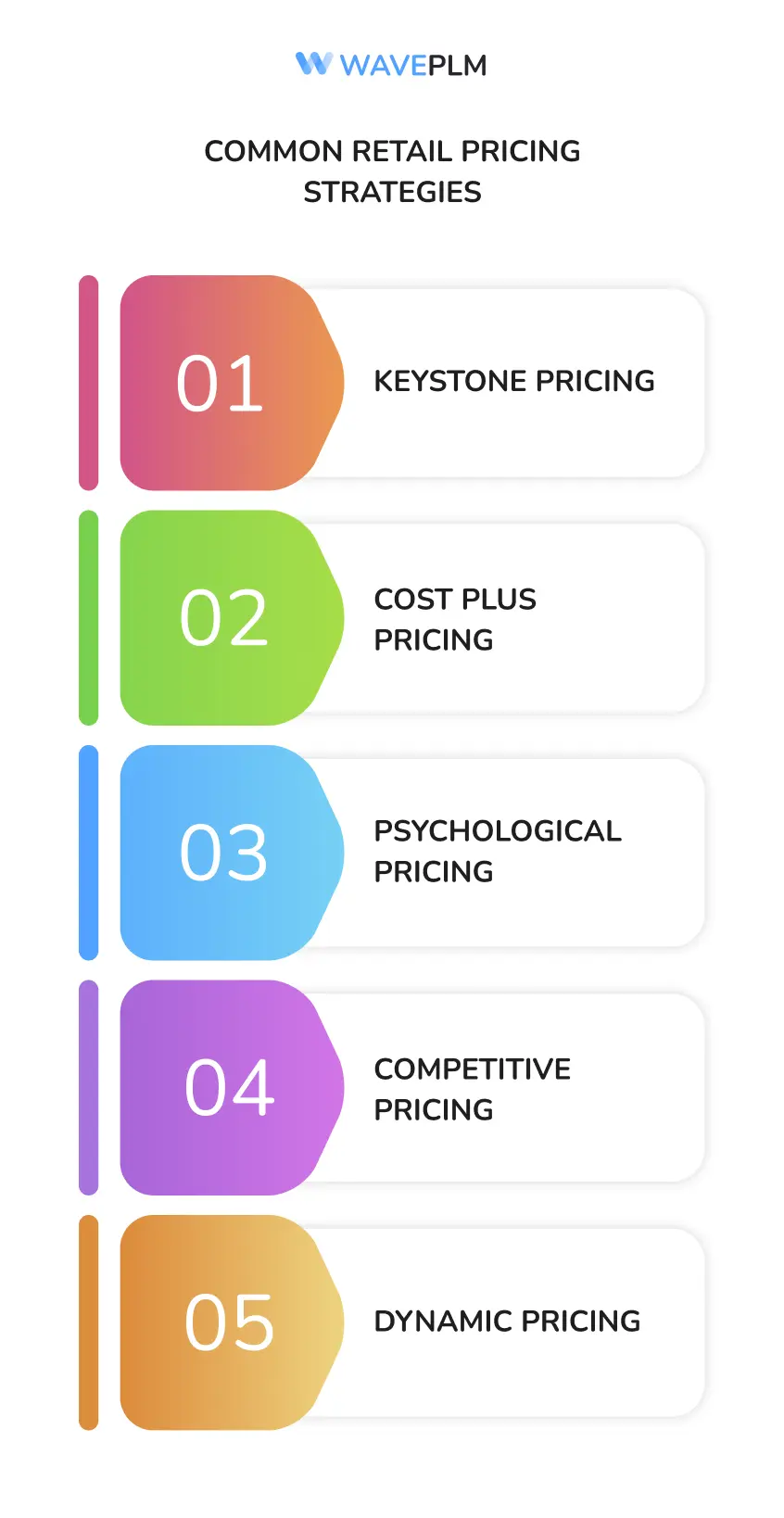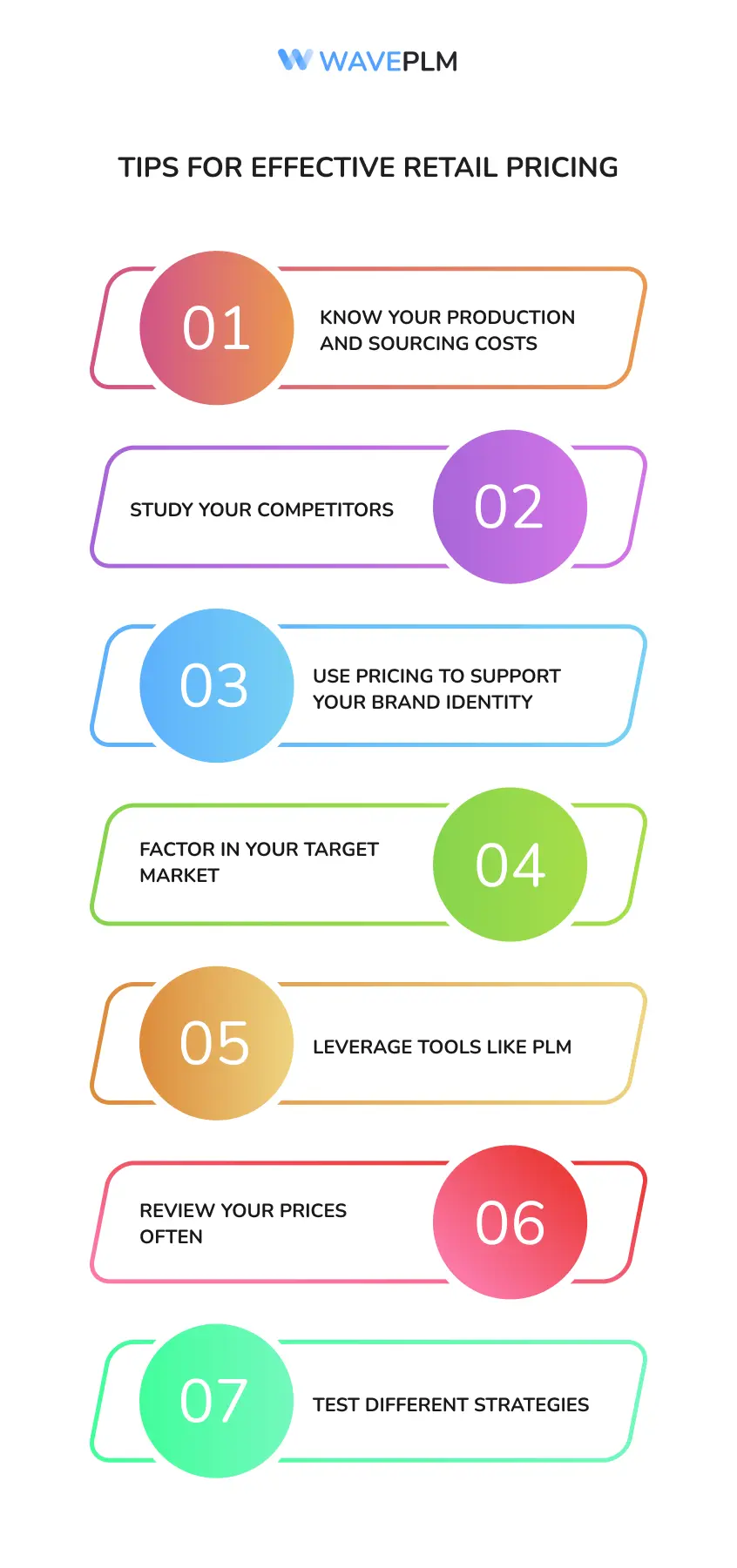
If you work in fashion, footwear, or cosmetics, you know one thing for sure—pricing can make or break your bottom line. In today’s fast-paced retail world, shaped by seasonal drops, viral trends, and fast-changing consumer habits, pricing is more than just math. It’s a strategic tool to position your product or service, remain competitive, and meet evolving market demands.
This article breaks down what retail pricing really means, explores common pricing methods like keystone pricing and cost plus pricing, and shows how brands use effective pricing strategies to maximize profits. Plus, we’ll look at how Product Lifecycle Management (PLM) software supports accurate pricing across the supply chain.
What is Retail Price?
Retail price is the amount a customer pays for a product or service at a retail store. It’s the number on the price tag—whether you’re shopping at a physical boutique or a global e-commerce platform.
The retail price reflects everything that went into getting the item to market: design, raw materials, labor, shipping, marketing, and profit. It sits at the end of the product journey in the supply chain.
Retail Price Meaning
- What’s a retail price? The price shoppers pay in retail stores.
- What does retail price mean? The final price after all markups are applied.
- Define retail pricing. A strategic process to set the right selling price for a product or service.
| Term | Meaning |
|---|---|
| Retail Price | Final price paid by the customer in-store or online |
| Retail Pricing | Strategy for setting retail prices based on various factors |
| Manufacturer Suggested Retail Price (MSRP) | Supplier’s recommended selling price to consumers |
| Retail Cost | Price paid by the retailer to acquire the product |
| Keystone Pricing | Pricing method where the retailer doubles the wholesale price |
Retail pricing isn’t just about making a sale. It tells the customer something about the product—its quality, positioning, and value.
Why Retail Pricing is Crucial
Retail pricing directly impacts:
- Profit margins
- Brand perception
- Sales velocity
- Inventory turnover
- Ability to remain competitive
A well-priced product sells faster, positions your brand effectively, and improves cash flow. Poor pricing can result in markdowns, low margins, or unsold stock.
Example: A high-end fashion retailer uses keystone pricing to double its retail cost. If a silk blouse costs $60 to produce, the store prices it at $120. This margin helps cover staff salaries, rent, and marketing—key costs in a brick and mortar store.
5 Common Retail Pricing Strategies
Pricing strategies differ by product type, sales channel, and business model. Here are five widely used approaches:
1. Keystone Pricing
A traditional pricing method, often used by fashion boutiques. Retailers double the wholesale cost to arrive at the retail price.
Example (Apparel):
- Production cost of jacket: $70
- Wholesale cost: $90
- Retail price: $180
Keystone pricing simplifies the math but may need adjusting in markets with tight competition or high price sensitivity.
2. Cost Plus Pricing
Retailers add a markup percentage to the product’s cost to ensure profit and cover expenses.
Example (Footwear):
- Cost to manufacture sandals: $25
- Markup: 100%
- Retail price: $50
This method works well in stable markets and for companies with clear cost structures.
3. Psychological Pricing
Using prices like $49.99 instead of $50 taps into consumer psychology. It feels like a better deal.
Example (Cosmetics):
- Suggested retail price for foundation: $29.99
- Market research shows $30 feels more expensive
Retailers also use “charm pricing” or “prestige pricing” depending on their brand positioning.
4. Competitive Pricing
Retailers look at the prices of similar products to determine how to position their own.
Example (Apparel):
- Competitor A: basic tee at $25
- Competitor B: premium tee at $40
- Your brand: $32 for better fabric and ethical sourcing
This helps you stay in the market conversation and appeal to a specific audience.
5. Dynamic Pricing
Also known as real-time pricing, this strategy adjusts based on demand, competitor pricing, and even time of day.
Example (Footwear):
- After a new sneaker drops, demand surges online
- Your price increases from $80 to $95 temporarily
Dynamic pricing is often used in e-commerce with algorithmic pricing tools.
| Strategy | Works Best For | Pros |
|---|---|---|
| Keystone Pricing | Small shops, premium products | Simple to use, solid profit margins |
| Cost Plus Pricing | Mass production, high-volume sales | Predictable and easy to apply |
| Psychological Pricing | All retail segments | Boosts customer conversion |
| Competitive Pricing | Saturated markets | Helps remain competitive |
| Dynamic Pricing | Online stores, fast-moving items | Adapts to changing market demands |

MSRP: Manufacturer Suggested Retail Price
MSRP is a reference price set by the manufacturer. It’s intended to create uniform pricing across retail stores. While not mandatory, many retailers use it to:
- Maintain brand consistency
- Avoid price wars
- Communicate perceived value
Example (Cosmetics):
- Luxury skincare brand suggests MSRP of $70 for a serum
- Retailers across channels stick to it for consistency
MSRP can sometimes conflict with competitive or dynamic pricing, so balance is key.
Pricing and Brand Positioning
The price of a product tells a story. It positions your brand in the customer’s mind.
- Higher prices = premium quality or exclusivity
- Lower prices = affordability or mass appeal
- Mid-range = balance of value and quality
Examples by Industry:
- Apparel: $15 tank top vs. $200 designer top
- Footwear: $35 flip-flops vs. $300 leather boots
- Cosmetics: $8 drugstore mascara vs. $60 clean beauty brand
Customers compare these prices to similar products to judge whether the value matches the offer. Your pricing must align with your brand promise.
Using PLM Software to Support Retail Pricing
Modern fashion and beauty brands rely on PLM systems to streamline pricing decisions. PLM software connects product design, sourcing, costing, and pricing all in one place.
Benefits of PLM for Pricing:
- Track costs from concept to production
- Align prices with cost sheets and BOMs (bills of materials)
- Enable collaboration between finance, sourcing, and sales teams
- Sync pricing strategies with the supply chain and launch calendar
- Avoid errors by centralizing data
| PLM Feature | Impact on Pricing |
|---|---|
| Real-Time Costing | Adjusts for material/labor cost changes instantly |
| Workflow Automation | Speeds up price approvals and updates |
| Integration with ERP | Links pricing with logistics and inventory planning |
| Multi-Channel Control | Sets different prices for regions or platforms |
PLM ensures that your pricing method is consistent, accurate, and tied directly to production realities.
Tips for Effective Retail Pricing
- Know your production and sourcing costs. Inaccurate cost inputs can derail your pricing strategy.
- Study your competitors. Understand how similar products are priced and positioned.
- Use pricing to support your brand identity. Don’t underprice premium products.
- Factor in your target market. Are you selling to value shoppers or trend-conscious buyers?
- Leverage tools like PLM. They ensure pricing remains connected to product data and timelines.
- Review your prices often. Market demands shift quickly—be ready to adapt.
- Test different strategies. A/B testing and seasonal markdowns can offer key insights.

Retail Pricing FAQ
| Question | Answer |
|---|---|
| What is retail cost? | The cost paid by the retailer to buy the product |
| What is keystone pricing? | A strategy of doubling the wholesale price |
| What does retail price mean? | The final amount paid by the consumer |
| What’s a retail price? | The price tag shoppers see in stores |
| What are retail prices? | Prices of goods or services in retail environments |
| Define retail pricing. | Methods used to set final customer prices |
| What is retail pricing strategy? | A way to set price that aligns with cost and positioning |
| What is MSRP? | Manufacturer’s recommended price for retailers |
Final Thoughts
Retail pricing isn’t guesswork. It’s a balance of numbers, psychology, market trends, and brand identity. Whether you’re pricing seasonal sneakers, organic lipstick, or limited-edition jackets, your strategy needs to fit your goals.
Use data from your supply chain. Study your competitors. Choose a pricing method that reflects your brand values and business model. From MSRP to dynamic pricing, each strategy has its place.
And remember—tools like PLM software can make the whole process smoother, more accurate, and more connected to your go-to-market success.
Need help aligning your retail pricing strategies with your product development workflow? Explore how Wave PLM empowers fashion, footwear, and cosmetics brands to price smarter and grow faster.





Leave a Reply